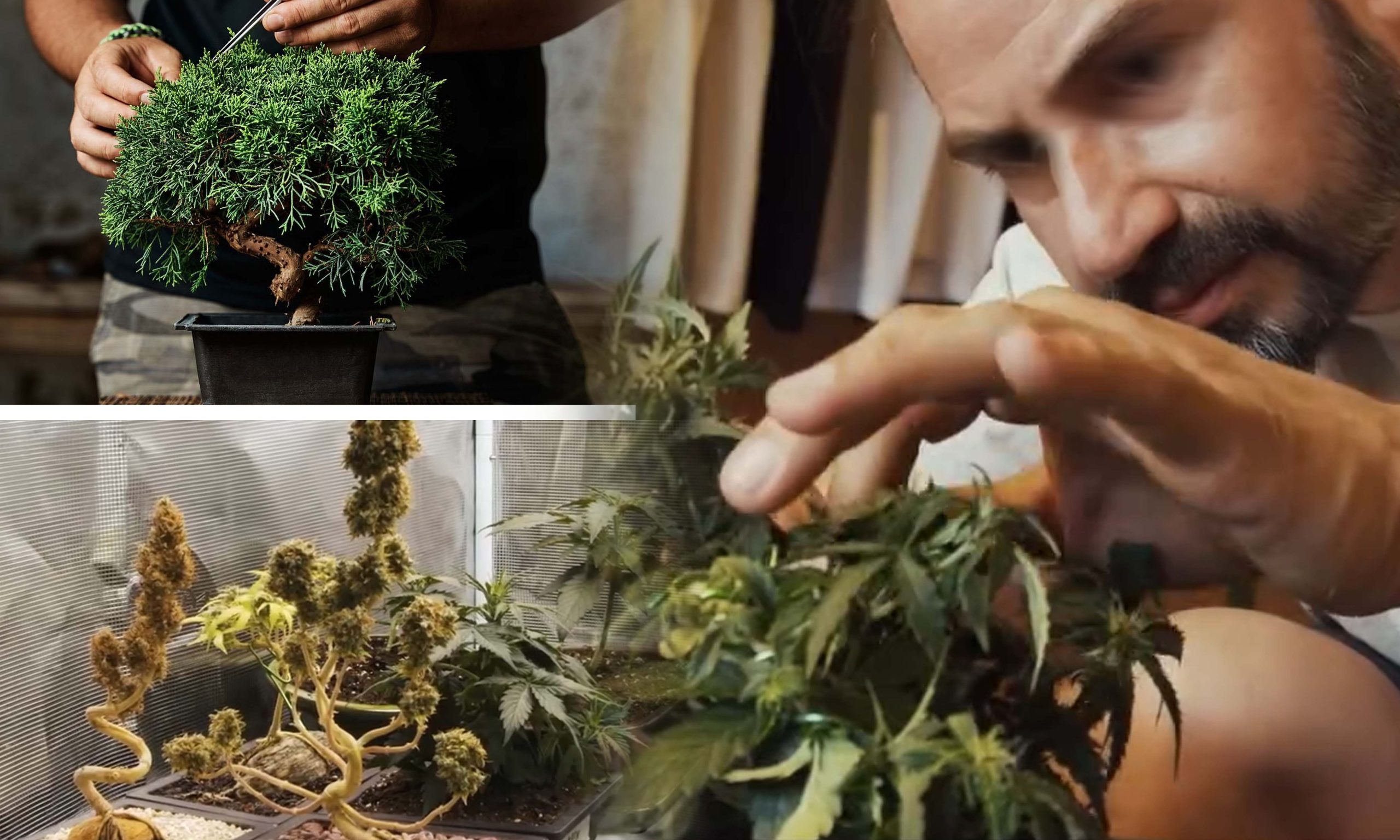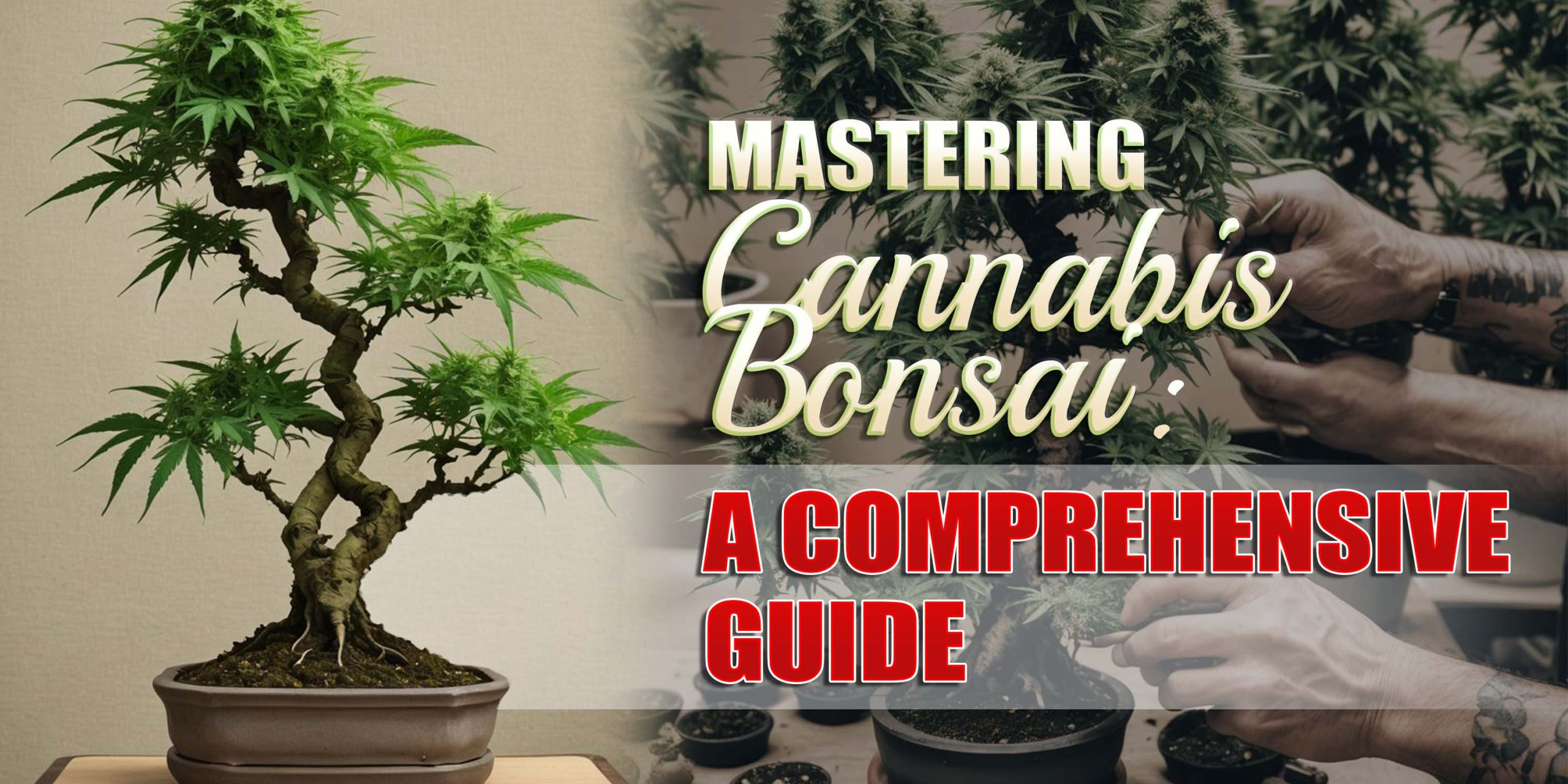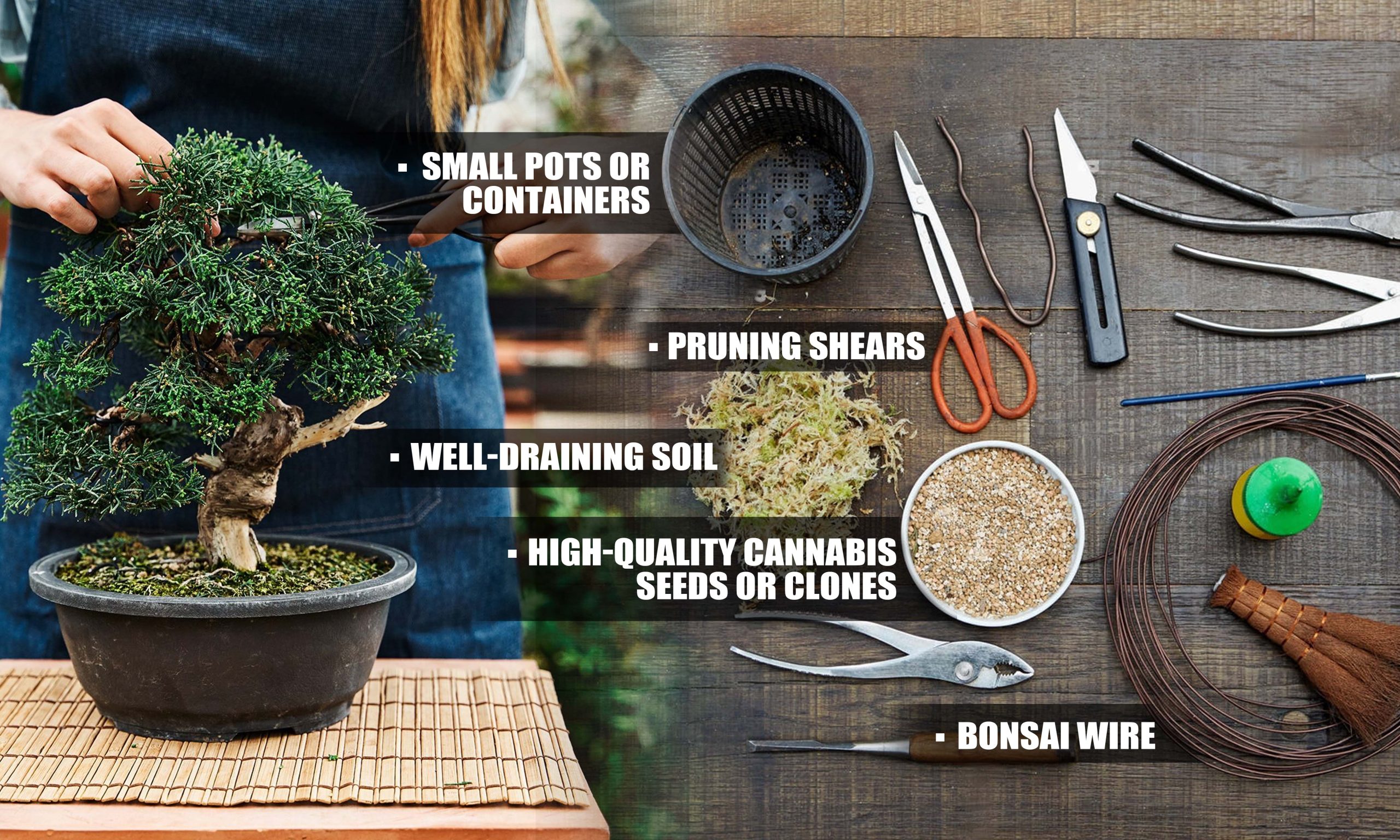Bonsai weed represents a fusion of horticulture and artistry, requiring patience, skill, and a deep understanding of plant biology. By harnessing techniques such as pruning, training, and root manipulation, growers can sculpt their cannabis plants into miniature replicas of their larger counterparts, imbued with character and charm.
Benefits of Cannabis Bonsai Cultivation

1. Space Efficiency
Cannabis bonsai allows growers to maximize space utilization, making it an ideal option for those with limited gardening space or indoor setups. By cultivating cannabis plants in bonsai form, growers can maintain multiple specimens within a confined area, optimizing available resources and maximizing yields.
2. Enhanced Control
One of the primary advantages of cannabis bonsai cultivation is the unparalleled level of control it offers growers. By meticulously shaping and pruning their plants, growers can influence every aspect of growth, from branch structure to bud development. This level of control enables growers to fine-tune environmental conditions, nutrient intake, and light exposure, resulting in healthier, more resilient plants with superior cannabinoid and terpene profiles.
3. Aesthetic Appeal
Beyond its practical benefits, cannabis bonsai holds significant aesthetic appeal, adding a touch of elegance and sophistication to any garden or indoor space. The miniature size and intricate shaping of bonsai plants evoke a sense of tranquility and harmony, inviting contemplation and admiration. Whether displayed as a standalone centerpiece or incorporated into a larger garden design, cannabis bonsai plants serve as captivating focal points, showcasing the beauty and versatility of the cannabis plant.
Getting Started: Essential Tools and Materials
To embark on your bonsai cannabis plant journey, you’ll need a few essential tools and materials to ensure success:
- Pruning Shears: Essential for shaping and trimming the cannabis plant. They allow growers to remove unwanted growth and maintain the desired shape of their bonsai specimens.
- Bonsai Wire: Used to guide the plant’s growth and gently shape its branches, bonsai wire is a versatile tool that enables growers to manipulate branch positioning and encourage lateral growth.
- Well-Draining Soil: Proper soil drainage is crucial for cannabis bonsai cultivation to prevent waterlogged roots and ensure optimal nutrient uptake. Choose a high-quality potting mix formulated explicitly for bonsai cultivation, or create your blend using organic materials such as perlite, vermiculite, and compost.
- Small Pots or Containers: Select containers appropriate for the size of your bonsai plant, ensuring adequate drainage and room for root growth. Opt for shallow pots with wide bases to accommodate the spreading root systems of bonsai plants and promote stability.
- High-Quality Cannabis Seeds or Clones: Choose strains suitable for bonsai cultivation, preferably with compact growth habits, short internodal spacing, and vigorous root development. The right genetics is crucial for achieving desirable bonsai characteristics such as small leaf size, dense foliage, and abundant branching.
Step-by-Step Guide to Cannabis Bonsai Cultivation
1. Selecting the Right Cannabis Strain
Choosing the right cannabis strain is crucial for successful bonsai cultivation. Look for strains known for their compact growth patterns, sturdy branches, and resilience to training and pruning. Indica-dominant varieties are often preferred for bonsai cultivation due to their naturally bushy structure and shorter stature, making them easier to shape and maintain.
2. Germination and Seedling Care
Once you’ve selected your desired cannabis strain, it’s time to germinate your seeds or obtain healthy clones from a reputable source. To encourage sprouting, follow standard germination procedures, such as soaking seeds in water or using a germination tray. Provide seedlings with ample light, preferably from a full-spectrum grow light, and maintain consistent moisture levels to support healthy root development.
3. Training and Pruning Techniques
As your cannabis bonsai begins to grow, it’s essential to employ training and pruning techniques to shape its growth and encourage a compact, bushy form. Low-stress training (LST) methods, such as bending and tying down branches, can help promote lateral growth and create a balanced canopy. Regular pruning of excess foliage and unwanted branches ensures proper airflow and light penetration, reducing the risk of mold and pest infestations.
4. Repotting and Root Pruning
Periodically repotting your bonsai marijuana plant is necessary to prevent root-bound conditions and promote healthy root growth. When repotting, carefully remove the plant from its container and gently tease out the roots to encourage branching and avoid tangling. Trim any circling or damaged roots, and replant the bonsai in fresh soil with adequate drainage. Root pruning should be performed sparingly to prevent stressing the plant unnecessarily.
5. Maintenance and Care
Consistent maintenance and care are essential for the long-term health and vitality of your cannabis bonsai. Monitor the plant regularly for signs of nutrient deficiencies, pests, and diseases, addressing any issues promptly to prevent further damage. Maintaining a consistent watering schedule allows the soil to dry out slightly between waterings to prevent overwatering and root rot. Provide adequate light, preferably from a high-quality grow light, and maintain optimal temperature and humidity levels to promote vigorous growth and flowering.
Common Challenges and Solutions
1. Overcrowding
If multiple branches compete for space within the canopy, selectively prune and train them to maintain an open, airy structure. Removing excess foliage allows for better light penetration and airflow, reducing the risk of mold and mildew.
2. Nutrient Deficiencies
Monitor your cannabis bonsai for signs of nutrient deficiencies, such as yellowing leaves or stunted growth. Adjust your feeding regimen to provide balanced nutrients for healthy growth and development. Consider supplementing with organic fertilizers or foliar sprays to address specific deficiencies and promote overall plant health.
3. Environmental Stress
Ensure your bonsai cannabis plants receive optimal environmental conditions to thrive, including adequate airflow, temperature, and humidity levels. Indoor growers may need to supplement natural light with artificial lighting to ensure sufficient light intensity and duration. Monitor for fluctuations in temperature and humidity, especially during the flowering stage, as extreme conditions can stress the plant and impact bud development.
Conclusion: Elevate Your Cannabis Cultivation with Bonsai
Mastering the art of cannabis bonsai offers a rewarding and aesthetically pleasing approach to cultivation, allowing growers to express their creativity while producing high-quality cannabis plants. By following the steps outlined in this comprehensive guide and leveraging the benefits of bonsai techniques, you can elevate your cannabis growing experience and create stunning miniature masterpieces that showcase the beauty and versatility of the cannabis plant. Embrace the challenge, exercise patience, and enjoy the journey of crafting your cannabis bonsai creations.


















